5 Tips to Uplevel Your Spring Cleaning and Decluttering
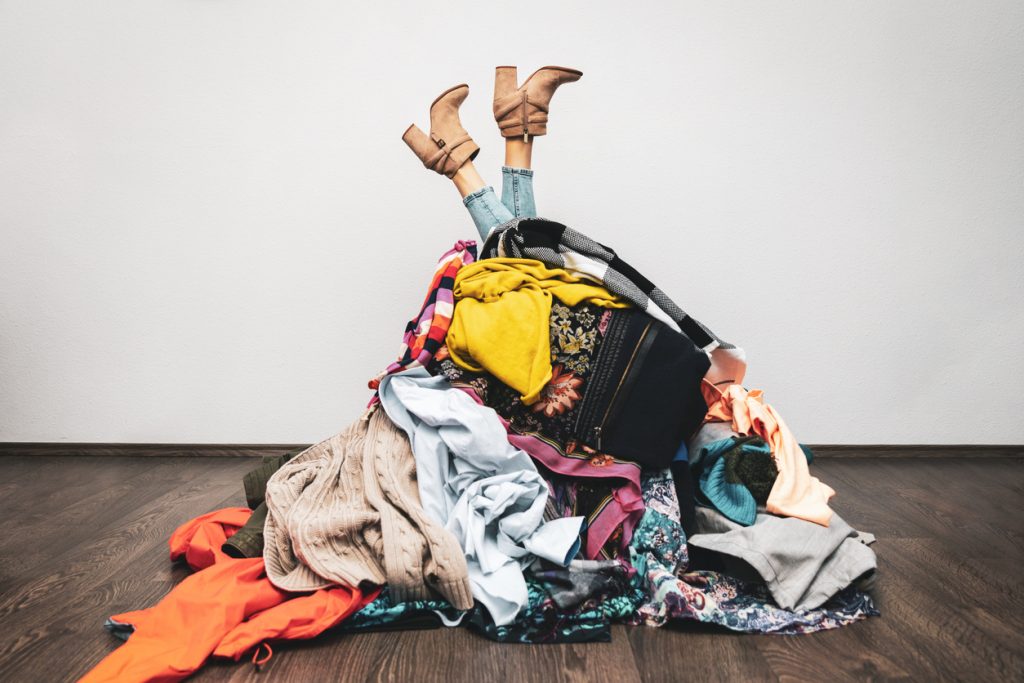 As the spring air settles in, the daylight hours get longer, and our positivity shifts. But that glistening sunshine may cast a harsh light on the parts of your home and your life that need a good reset after this COVID year. Spring cleaning and decluttering can ignite fresh ideas and increase productivity. Both cleaning and the resulting tidiness and spaciousness can help reduce stress and anxiety. This is a great time to get your house and your mental health in check as we transition back to ‘normal’. You’ll help yourself and your Neurodiverse kids to create an optimal ecosystem so the re-entry back to school feels organized and fresh. Follow these steps in our Spring Spankin’ Clean Checklist to get started and map out your plan of action.
As the spring air settles in, the daylight hours get longer, and our positivity shifts. But that glistening sunshine may cast a harsh light on the parts of your home and your life that need a good reset after this COVID year. Spring cleaning and decluttering can ignite fresh ideas and increase productivity. Both cleaning and the resulting tidiness and spaciousness can help reduce stress and anxiety. This is a great time to get your house and your mental health in check as we transition back to ‘normal’. You’ll help yourself and your Neurodiverse kids to create an optimal ecosystem so the re-entry back to school feels organized and fresh. Follow these steps in our Spring Spankin’ Clean Checklist to get started and map out your plan of action.
1. Strategize your spring cleaning and decluttering.
Instead of stressing about devoting an entire day or weekend to spring cleaning, take a different approach. It will probably be more productive for you to tackle different aspects of decluttering and cleaning in phases. Dedicate short windows of time to particular areas of your house, so the task feels less overwhelming. If trying to clean the kitchen, the office and living room in one day sounds like too (it does to me!), pick one room to approach. 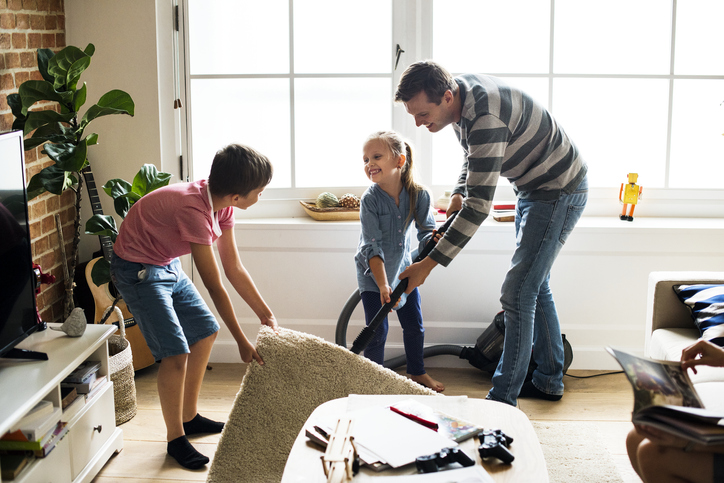 Make a list of what you want to do, how much overall time you want to spend in that room and how your kids can assist you. Give them tasks that are age appropriate and fit their capabilities. Pick different days for projects too. Maybe spend 20 minutes vacuuming your rugs on Saturday, 30 minutes going through your dresser drawers on Sunday, and so on. This will make everything feel more manageable, especially when you have your munchkins helping you out.
Make a list of what you want to do, how much overall time you want to spend in that room and how your kids can assist you. Give them tasks that are age appropriate and fit their capabilities. Pick different days for projects too. Maybe spend 20 minutes vacuuming your rugs on Saturday, 30 minutes going through your dresser drawers on Sunday, and so on. This will make everything feel more manageable, especially when you have your munchkins helping you out.
2. Start with cleaning the space that inspires you and your kids.
What parts of disarray in the house bother you the most? What bothers them? If it happens to be your desk or their workspace, start to declutter there. If your kids’ imagination is sparked in the playroom or their rooms, head there. Your family thrives together in the kitchen? Optimize that space first. Together, collaborate on a plan of attack. What are you going to do first? What’s after that? You’re not just tidying up: you’re actually teaching them executive functioning skills like planning, prioritizing and organization along the way. Emphasize teamwork. How you approach this process and how you manage your frustration will set the tone for your decluttering process. Take short breaks to reset, have a drink or use the bathroom and then a longer break when you’ve completed a chunk of work.
3. Set donation goals.
It can be easy to forget that we don’t need every item in our homes… until spring cleaning comes around. I approach spring cleaning every year with a goal of donating items that I haven’t worn or used in several years and don’t think I will in the future.
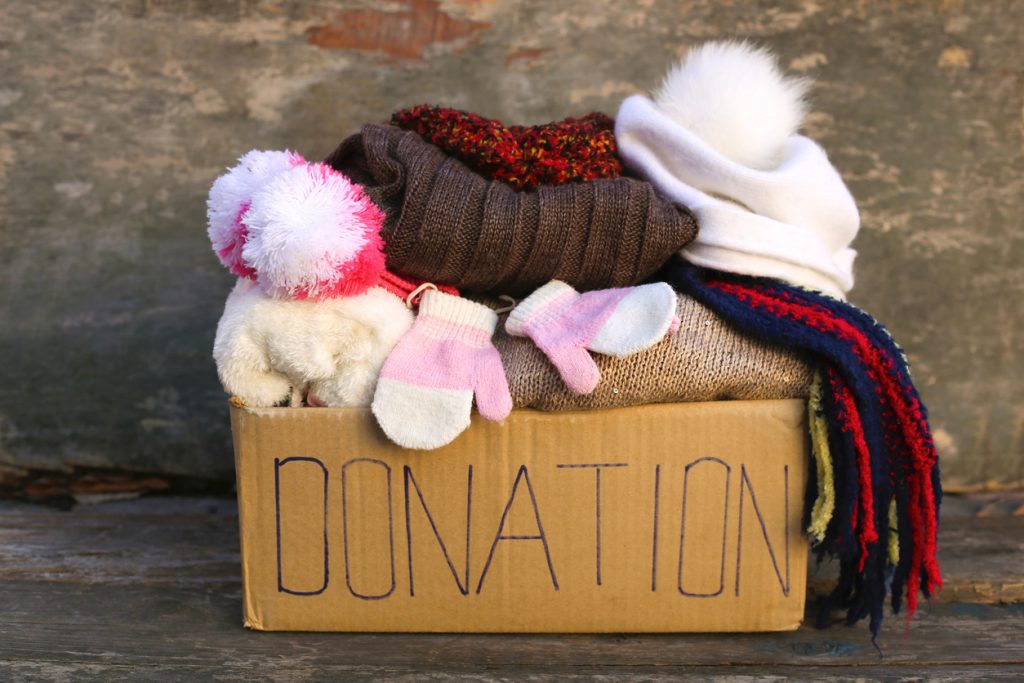
Some of these items may be in bad shape and will head to the trash. But other things could interest or help other people. Create a few bags or boxes: keep, trash, donate. Assign or place items in these categories. By the end of my cleaning project, I may have a dozen things to sell at the consignment store or drop by the local donation thrift shop. Set goals like this with your kids too. They will have outgrown certain clothes or games and sharing them with others can give them a sense of purpose. It can be hard for some neurodivergent kids to let go of their stuff. If that’s true in your house, create a maybe bag as a transitional holding place. Then, you can revisit it in two weeks. Working together like this shows them know how to contribute to the household and to those less fortunate. Remember to use small incentives (like a new book or extra screen or outdoor time) to motivate them and keep them focused on the goal.
4. Organize your kids with Self-Smart Systems.
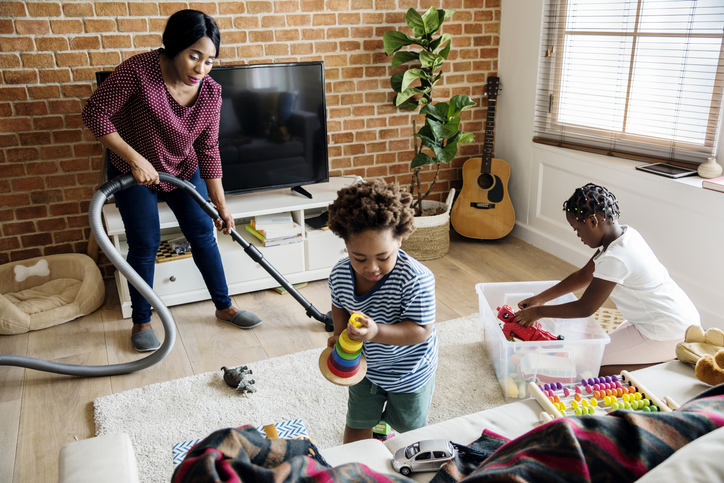 Start your organizing projects with your kids by asking them some questions. Instead of, “Why are your clothes always on the floor?” try, “I notice your clothes seems to end up on the floor. What might change that?” Kids with ADHD often have their own ideas about what makes sense to their brains in terms of managing their stuff. Some like to separate their clothes by color; others by function (tops, bottoms, etc.); others by seasons. Work with your child’s internal systems by expressing curiosity. “I wonder what would make it easier for you to see what’s in your drawers” or, “Let’s put the things you’re not really wearing in a plastic box and revisit this in a few months.” Ask, listen, participate and guide. When you do this, you become your child’s cleaning ally instead of their adversary.
Start your organizing projects with your kids by asking them some questions. Instead of, “Why are your clothes always on the floor?” try, “I notice your clothes seems to end up on the floor. What might change that?” Kids with ADHD often have their own ideas about what makes sense to their brains in terms of managing their stuff. Some like to separate their clothes by color; others by function (tops, bottoms, etc.); others by seasons. Work with your child’s internal systems by expressing curiosity. “I wonder what would make it easier for you to see what’s in your drawers” or, “Let’s put the things you’re not really wearing in a plastic box and revisit this in a few months.” Ask, listen, participate and guide. When you do this, you become your child’s cleaning ally instead of their adversary.
5. Consider storing winter or other seasonal items.
Blankets, coats, gloves, hats, bathing suits, flip flops, beach toys. You don’t need access to all of these things all year long. Decide what you will need and use and then put away the other stuff. For people living in cooler climates, may winter items can be bulky and take up lots of space. When there’s fewer items in the environment, it’s easier for kids with ADHD (and their parents) to see their options and use their stuff. To deal with unnecessary items, consider vacuum sealing. First, your son or daughter will think it’s the coolest thing ever and probably will help you. Who doesn’t want to see stuff shrink? These packages will take up less space so that your closets look and feel more streamlined. 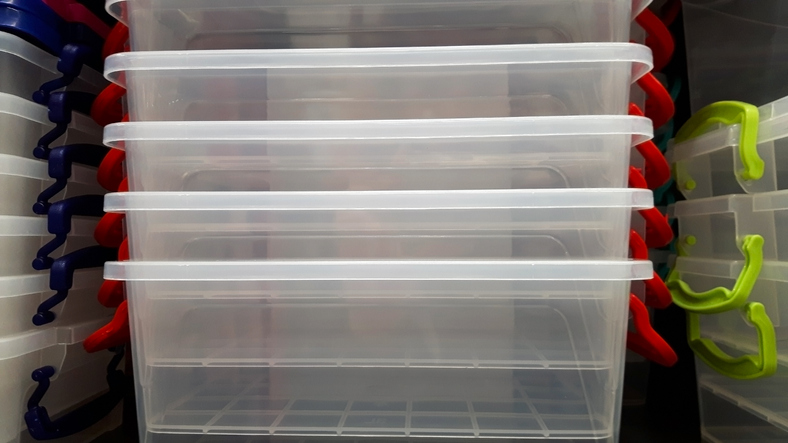 Another option is using plastic storage bins. I love these! Label the boxes and put them out of sight. When winter returns next year, you’ll be able to see and locate everybody’s stuff more quickly. Of course, if you find items that are outgrown or used very little this winter, pass them along to others! Spring cleaning and decluttering can refresh the mind, body, and spirit. Set aside specific times on the family calendar to tidy up. Whatever steps your family takes now, you’ll reap the benefits that much sooner!
Another option is using plastic storage bins. I love these! Label the boxes and put them out of sight. When winter returns next year, you’ll be able to see and locate everybody’s stuff more quickly. Of course, if you find items that are outgrown or used very little this winter, pass them along to others! Spring cleaning and decluttering can refresh the mind, body, and spirit. Set aside specific times on the family calendar to tidy up. Whatever steps your family takes now, you’ll reap the benefits that much sooner! 
Read more blog posts:
- Feeling overwhelmed by something? Break it down!
- Teens, ADHD and Procrastination
- ADHD and Motivation: How stress reduces productivity and what you can do about it
Handouts, videos & more in Dr. Saline’s Store: https://drsharonsaline.com/product/motivation/ https://drsharonsaline.com/product/home-seminar/
